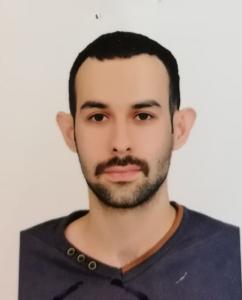Assessing Spatial-Temporal Changes in Urban Green Spaces Using Remote Sensing Data - دانشکده فنی و مهندسی
Assessing Spatial-Temporal Changes in Urban Green Spaces Using Remote Sensing Data

نوع: Type: thesis
مقطع: Segment: masters
عنوان: Title: Assessing Spatial-Temporal Changes in Urban Green Spaces Using Remote Sensing Data
ارائه دهنده: Provider: Sobhan Adibi
اساتید راهنما: Supervisors: Hoseein Torabzadeh khorasani
اساتید مشاور: Advisory Professors:
اساتید ممتحن یا داور: Examining professors or referees: morteza heidarimozaffar- hassan khotanlou
زمان و تاریخ ارائه: Time and date of presentation: 2023
مکان ارائه: Place of presentation: Room 4 of the electrical department
چکیده: Abstract: Urban green spaces, as a vital aspect of cities, hold great importance in urban development. These spaces play a crucial role in the quality of life for citizens, city climate regulation, and environmental preservation. The relationship between urban green spaces, population, and construction, as a fundamental factor in urban policy development and management, is of significant importance. The primary objective of this research is to initially find a suitable and accurate method for classifying urban land use. In this phase of the research, a high-precision classification model is selected and implemented to analyze urban land use, and the results of this model serve as the basis for the study. In the next phase, the relationship between urban green spaces, urban population, and construction development in different cities is analyzed. This part of the research aims to understand and evaluate the role of green spaces in urban growth and development and their impact on urban population and construction development, delving into a detailed analysis of these relationships. Additionally, the impact of annual precipitation on urban green spaces is also examined and assessed in this research. This section aims to analyze the influence of annual precipitation on the state and quality of urban green spaces, with the results being considered for urban management and planning improvement. The methodology of this research consists of several key stages. Initially, using three different classification methods, namely Support Vector Machine (SVM) classification, spectral mixture analysis, and the use of spectral indices, LANDSAT satellite images of the cities of Shiraz, Rasht, and Hamedan at different time intervals are investigated and classified. The results obtained from statistical analysis and determination coefficient calculations indicate that spectral mixture analysis is the most accurate classification method. In the next phase, the relationship between building uses and population with urban green spaces is studied and analyzed. The research results demonstrate that this relationship between population, construction, and the extent of urban green space depends on the specific management and characteristics of each city. Furthermore, after examining the relationship between annual precipitation and urban green spaces, the correlation coefficient calculations indicate that there is no strong relationship between annual precipitation and urban green spaces in the studied cities. The correlation coefficients for Shiraz, Rasht, and Hamedan were calculated as 0.49, 0.56, and 0.76, respectively
